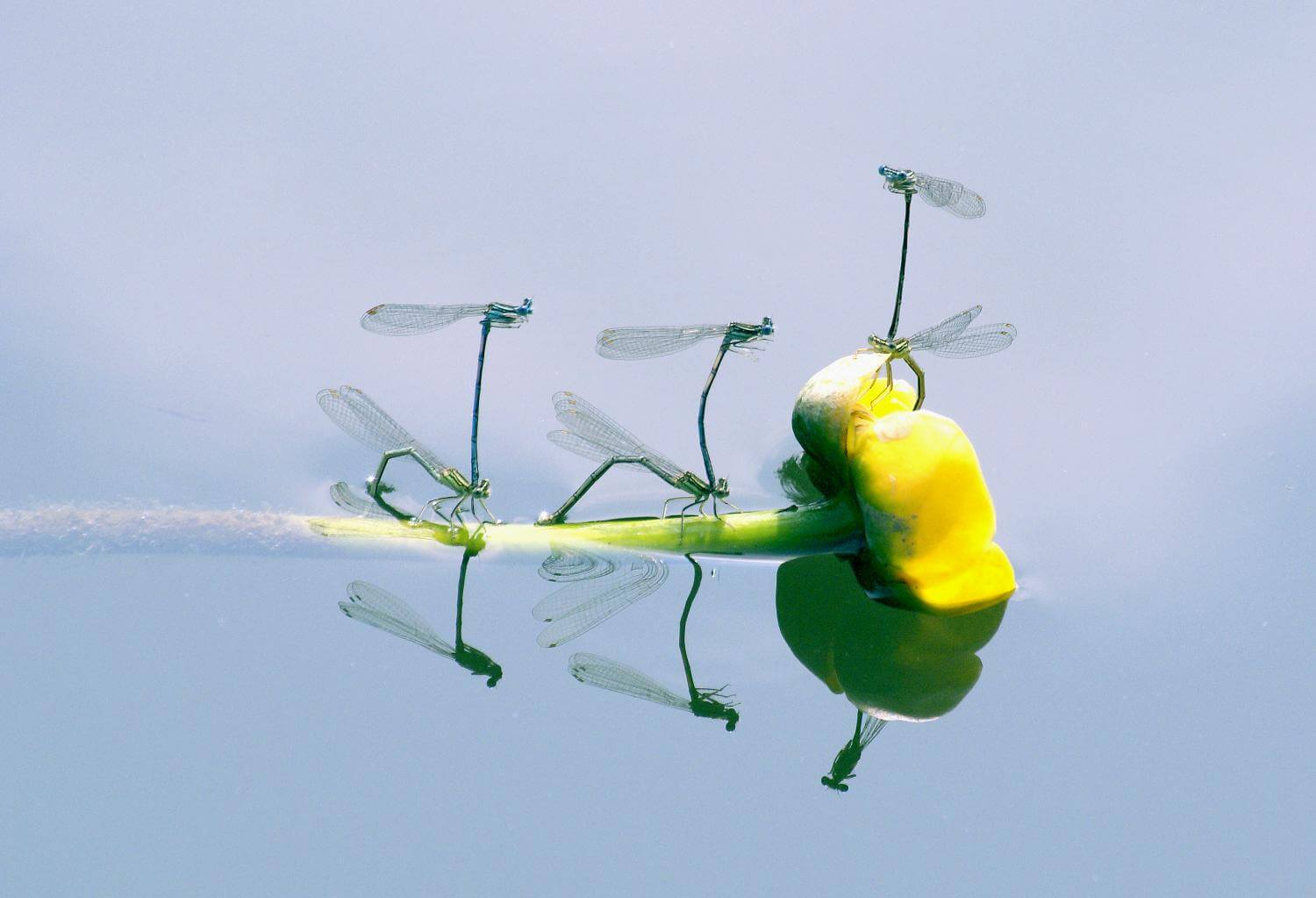Species Information:
Length: 36mm
Flight Period:May to September
Adult males have obvious expanded, white legs which are used in a fluttering display flight in front of females. The male is pale blue with paired black markings on S2-6. S7-10 are more extensively marked with black. The female is very pale, creamy white when immature (f. lactea) becoming pale green with paired black marks on each segment of the abdomen. The ante-humeral stripes are quite broad with narrow, paler stripes below and a medial pale line on the thorax. The pterostigma is pale brown.
Habitat:
Mainly found along slow-flowing lowland streams and rivers, sometimes on canals or ponds.
Status & Distribution:
Uncommon, though can be locally abundant on rivers and canals in southern England and a few sites in Wales.
Similar Species:
No other species in the UK has the white legs of the male and the pale, immature female cannot be mistaken for any other species. The mature, pale blue male is distinctively different from all other blue and black damselflies.
.jpg)
.jpg)
.jpg)
.jpg)
